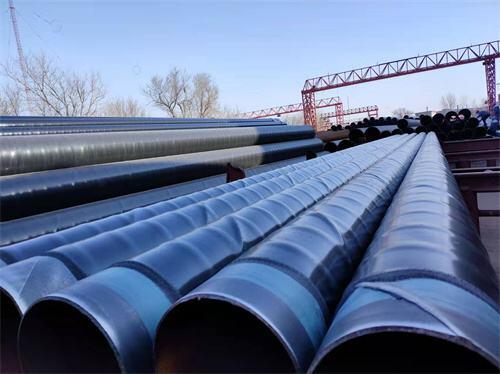smlsis the most widely used pipe material at present. Generally, it needs anti-corrosion treatment when it is used for chemical pipelines, oil pipelines, natural gas pipelines, water pipelines and other projects. The common anti-corrosion processes of seamless steel pipes mainly include 3PE anti-corrosion, Epoxy coal tar anticorrosion, epoxy resin anticorrosion, IPN8710 anticorrosion, cement mortar anticorrosion technology, etc.

1. Why is seamless steel pipe anti-corrosion?
Seamless steel pipe is a relatively high-end steel pipe, and the price is very expensive, but after all, the raw material is also iron, which will also rust, which also affects the service life in the pipeline. Therefore, the anti-corrosion of seamless steel pipe must also be done before pipeline construction. One process, for the anti-corrosion of the seamless steel pipe, is mainly to do 3pe anti-corrosion or epoxy coal tar tar anti-corrosion.
2. Anti-corrosion process of seamless steel pipe
The anti-corrosion of the steel pipe is according to the requirements of the drawings, and the epoxy coal tar paint is used to cover the glass fiber cloth, and the top paint is applied for anti-corrosion.
The construction process of the outer wall: pipe rust removal → primer coating → first topcoat → second topcoat → glass fiber cloth → topcoat → topcoat;
Inner wall construction process: pipeline rust removal → primer coating → first topcoat → second topcoat → third topcoat.
3. Precautions for anti-corrosion of seamless steel pipes (pipe coating)
1) Pipe rust removal
Before priming, the surface of the pipe should be cleaned of grease, ash, rust and scale. The quality standard of sandblasting and rust removal reaches Sa2.5 level.
2) Apply primer after rust removal on the surface of the pipe, and the time interval between them should not exceed 8 hours. When applying primer, the base surface should be dry. The primer should be brushed evenly and fully, without any lumps or blistering, and should not be brushed within the range of 150-250mm at both ends of the tube.
3) After the primer surface is dry, apply the topcoat and wrap the glass cloth. The time interval between the primer and the first topcoat should not exceed 24 hours.













 Eastern Steel Manufacturing Co.,Ltd not only improve product production and sales services, but also provide additional value-added services. As long as you need, we can complete your specific needs together.
Eastern Steel Manufacturing Co.,Ltd not only improve product production and sales services, but also provide additional value-added services. As long as you need, we can complete your specific needs together.










